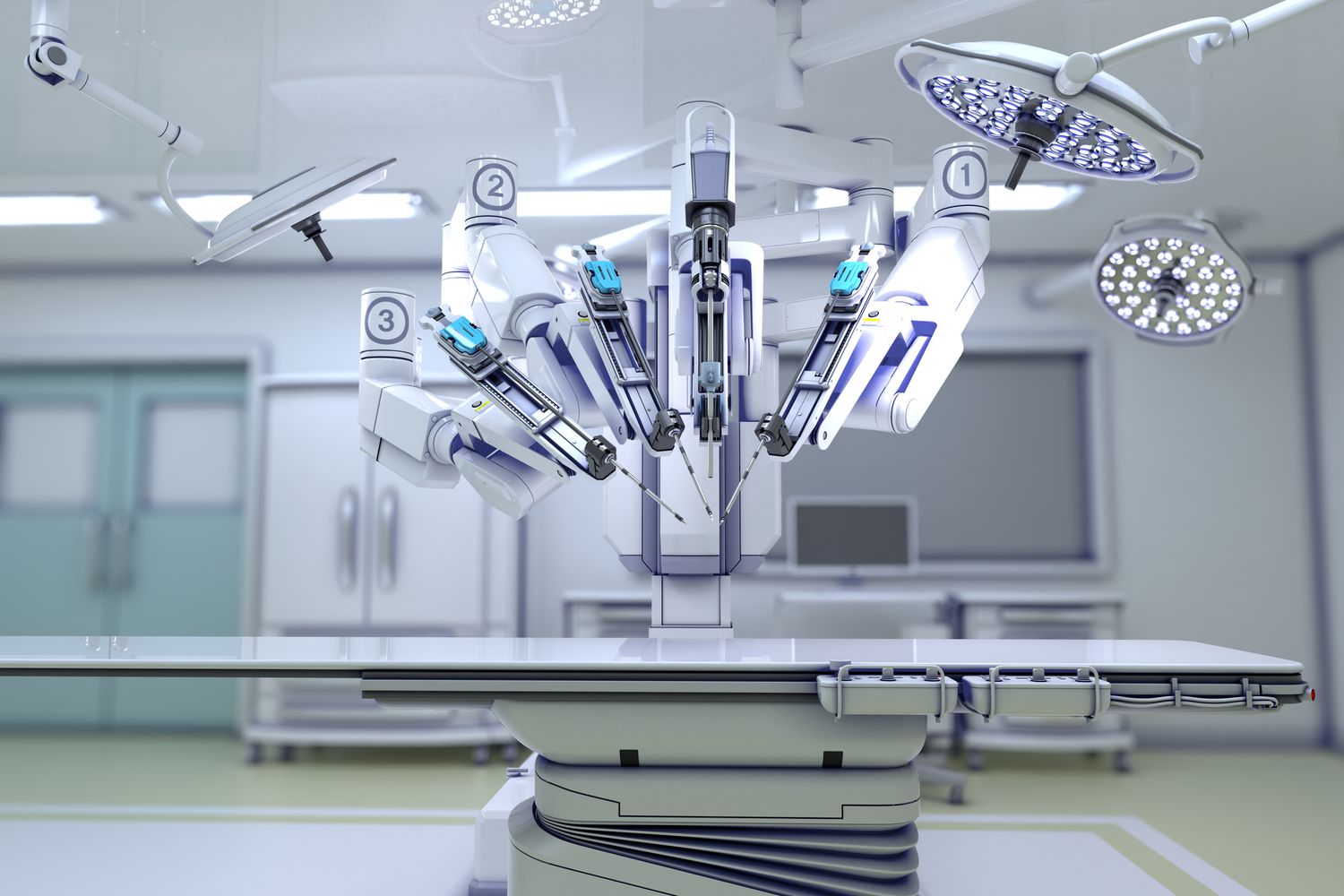Robotic surgery has emerged as a cutting-edge technology in the field of surgical oncology, transforming the way cancer is treated and offering numerous benefits for patients. Unlike traditional surgery, which relies on large incisions and extensive manual manipulation by the surgeon, robotic surgery utilizes advanced robotic systems to perform minimally invasive procedures with enhanced precision and control.
Evolution and Technology Behind Robotic Surgery
The concept of robotic surgery dates back to the 1980s when the first robotic surgical system, known as the PUMA 560, was introduced. Over the years, significant advancements in technology have led to the development of more sophisticated robotic systems, such as the da Vinci Surgical System, which is widely used in surgical oncology today.
How Does Robotic Surgery Work for Cancer?
In robotic surgery, the surgeon operates from a console and controls robotic arms equipped with miniature instruments. These instruments are inserted into the patient’s body through small incisions, allowing for a high degree of precision and dexterity at the surgical site.
Additionally, robotic systems provide magnified, 3D images of the surgical area, dramatically improving visualization for surgeons. This advanced imaging, combined with the robotic arms’ flexibility, enables surgeons to reach the innermost regions of the human body in ways that human hands cannot. Overall, surgical robots offer surgeons easier access, greater accuracy, improved dexterity, and ultimately ensure better surgical outcomes for patients.
Advantages of Robotic Surgery
Robotic surgery offers several advantages for cancer treatment compared to traditional approaches:
Minimally Invasive: Robotic surgery requires smaller incisions, resulting in less trauma to surrounding tissues, reduced blood loss, and faster recovery times for patients.
Enhanced Precision: The robotic system provides superior visualization and precise instrument control, allowing surgeons to target tumors with greater accuracy while minimizing damage to healthy tissues.
Reduced Complications: With its minimally invasive nature and precise instrumentation, robotic surgery can lower the risk of post-operative complications such as infections and wound healing issues.
Quicker Recovery: Patients undergoing robotic surgery typically experience shorter hospital stays and faster return to normal activities compared to those undergoing traditional surgery.
Common Cancer Types Treated with Robotic Surgery
Robotic surgery for cancer is transforming how complex tumors are treated in modern hospitals. By combining the precision of advanced robotic instruments with the skill of experienced surgeons, this technique delivers safer, less invasive, and more efficient cancer care. Robotic oncosurgery minimizes damage to healthy tissues, reduces blood loss, and shortens hospital stays — helping patients return to normal life faster and with fewer complications.
Prostate Cancer
For men with prostate cancer, robotic-assisted radical prostatectomy offers exceptional precision. The robotic arms allow surgeons to navigate delicate nerves and vessels around the prostate, ensuring cancer removal while preserving urinary control and sexual function. This nerve-sparing approach provides excellent cancer control with an improved quality of life after surgery.
Gynecologic Cancers
In women with cervical or endometrial cancers, robotic surgery enables microscopically precise removal of tumors and lymph nodes. The enhanced visualization and dexterity allow surgeons to perform complex hysterectomies or pelvic dissections through tiny incisions. Patients benefit from faster healing, less pain, minimal scarring, and lower infection risk.
Colorectal Cancer
Robotic oncosurgery has become a breakthrough for colorectal cancer treatment. The system’s 3D imaging and fine instrument movement help surgeons remove deep-seated tumors with precision while protecting surrounding nerves and bowel function. This results in fewer complications, reduced need for stoma formation, and quicker recovery of normal bowel habits.
Head and Neck Cancers
Transoral Robotic Surgery (TORS) is a major advancement for cancers of the throat, tongue, and oral cavity. Instead of external incisions, the surgeon operates through the mouth using flexible robotic tools. Patients experience less postoperative pain, no visible scars, and a better chance to preserve speech and swallowing functions.
Lung and Thoracic Cancers
For lung and chest tumors, robotic lobectomy allows surgeons to operate with minimal disturbance to the chest wall and surrounding structures. The precision of robotic instruments reduces complications, preserves lung capacity, and promotes faster recovery — making breathing easier soon after surgery.
Urologic Cancers
Robotic surgery also plays a key role in managing kidney and bladder cancers. Procedures like partial nephrectomy and bladder reconstruction are performed with enhanced control, leading to less bleeding, shorter hospital stays, and better urinary function over time.
Why Choose Robotic Surgery for Cancer Treatment in India
India has rapidly emerged as a global hub for robotic oncosurgery. Hospitals like Onco Life Hospitals in Pune and Mumbai are equipped with cutting-edge robotic systems operated by highly skilled surgical teams. Patients benefit from world-class cancer care at a fraction of international costs, along with compassionate, personalized treatment plans.
Robotic surgery for cancer combines innovation with empathy — giving patients not only medical precision but also renewed confidence in their recovery journey. For more information, success stories, or a consultation, reach out to Onco Life Hospitals’ patient support team and discover how robotic oncosurgery can redefine your path to healing.
Applications in Cancer Treatment
Robotic surgery is utilized in various cancer treatments across different specialties:
Prostate Cancer: Robotic-assisted prostatectomy is a common procedure for the treatment of prostate cancer, offering improved outcomes and reduced risk of complications. In fact, since the development of the da Vinci Surgical System in 2000, Robot-assisted Radical Prostatectomy (RARP) has emerged as the gold standard in the minimally invasive surgical treatment of prostate cancer.
Gynaecologic Cancers: Robotic surgery is also used for procedures such as hysterectomy and lymph node dissection in the treatment of gynaecologic cancers like cervical and endometrial cancer. Robotics brings unique advantages to gynaecologic surgeries in terms of reducing the recovery time by half and improving post-operative pain relief.
Colorectal Cancer: Robotic surgery enables precise removal of colorectal tumors while preserving surrounding structures, leading to better functional outcomes and quality of life for patients.
As outlined above, robotic surgery has several advantages over traditional surgery and can be a real game-changer in surgical oncology. However, in order to fully leverage the power of robotics in cancer surgery, there is a need for highly skilled specialists with extensive training and experience in robotic-assisted procedures. Onco-Life Cancer Center in Pune, Maharashtra is at the forefront of adopting the latest advancements in robotics technology to improve surgical outcomes for cancer patients. With some of the best robotic surgeons for cancer in Pune as part of its surgical oncology team, Onco-life Cancer Center offers advanced treatment options for those needing highly precise and minimally invasive surgical procedures to fight cancer.
The Future of Robotic Surgery in Oncology
As technology continues to advance, the role of robotics in surgical oncology is expected to expand further. Future trends may include the integration of artificial intelligence algorithms to enhance surgical decision-making, and the exploration of new applications for robotics technology in cancer treatment.
Robotic surgery has undoubtedly revolutionized cancer treatment by offering patients a less invasive, more precise surgical option with numerous benefits. With our advanced technology and the expertise of the best robotic surgeon for cancer in Pune, Onco-Life Cancer Center continues to pave the way for innovation in surgical oncology, providing new hope for cancer patients and improving outcomes.
Frequently Asked Questions (FAQs)
Blog-Robotic Surgery for Cancer Treatment: An In-Depth Overview
What Cancers Can Be Treated With Robotic Surgery?
Robotic surgery is used across a wide spectrum of cancers that require precision and delicate dissection. Commonly treated types include prostate, cervical, endometrial, colorectal, lung, kidney, and bladder cancers.
It is also effective for select head-and-neck and thoracic tumors. Surgeons use robotic systems to navigate tight spaces where accuracy is critical — such as the pelvis, chest, or deep abdomen — helping remove tumors completely while preserving healthy organs and vital nerves. As technology advances, more complex cancers are becoming suitable for robotic oncosurgery.
How Does Robotic Surgery For Cancer Differ From Laparoscopic Surgery?
Both robotic and laparoscopic surgeries are minimally invasive, but robotics takes precision to a new level. In robotic oncosurgery, the surgeon controls robotic arms from a console that provides a magnified 3D view and wrist-like movement of instruments that rotate far more freely than the human hand.
This enhanced range of motion allows meticulous tumor removal with minimal blood loss and trauma. Laparoscopic instruments, by contrast, are more rigid and rely on 2D imaging, which can make fine dissection around nerves or blood vessels more challenging. Patients often experience smoother recoveries and less postoperative discomfort with robotic procedures.
What Is The Average Recovery Time After Robotic Cancer Surgery?
Recovery depends on the type of cancer and overall health of the patient, but most individuals notice significant improvement within one to two weeks. Since robotic surgery uses smaller incisions and causes less internal trauma, hospital stays are typically shorter — often just two to three days.
Patients usually resume light activities within a week and gradually return to normal routines in a few weeks. Compared to traditional open surgery, recovery after robotic oncosurgery is generally faster, with reduced pain, fewer wound-related issues, and quicker restoration of strength.
Are There Any Risks Unique To Robotic Surgery?
Robotic surgery is extremely safe when performed by an experienced team, but like any procedure, it carries some risks. These include technical malfunctions, longer setup times, or the need to switch to an open approach if visibility becomes limited.
Standard surgical risks such as bleeding, infection, or anesthesia reactions may still occur, though their likelihood is lower due to the minimally invasive nature of robotics. Choosing a center with a well-trained robotic surgical team and advanced backup systems minimizes these concerns and ensures patient safety at every step.
How To Find The Best Robotic Cancer Surgeon In India?
Start by looking for hospitals recognized for robotic oncosurgery excellence, such as those equipped with advanced systems like the da Vinci Xi or Versius platforms. Review the surgeon’s qualifications, case experience, and specific cancer specialisation. Patient testimonials and institutional track records offer valuable insights.
Leading centers such as Onco Life Hospitals in Pune and Mumbai combine cutting-edge technology with compassionate, multidisciplinary cancer care — ensuring precision, affordability, and trust under one roof. A consultation with their expert team can help you understand if robotic surgery is the right choice for your treatment.


